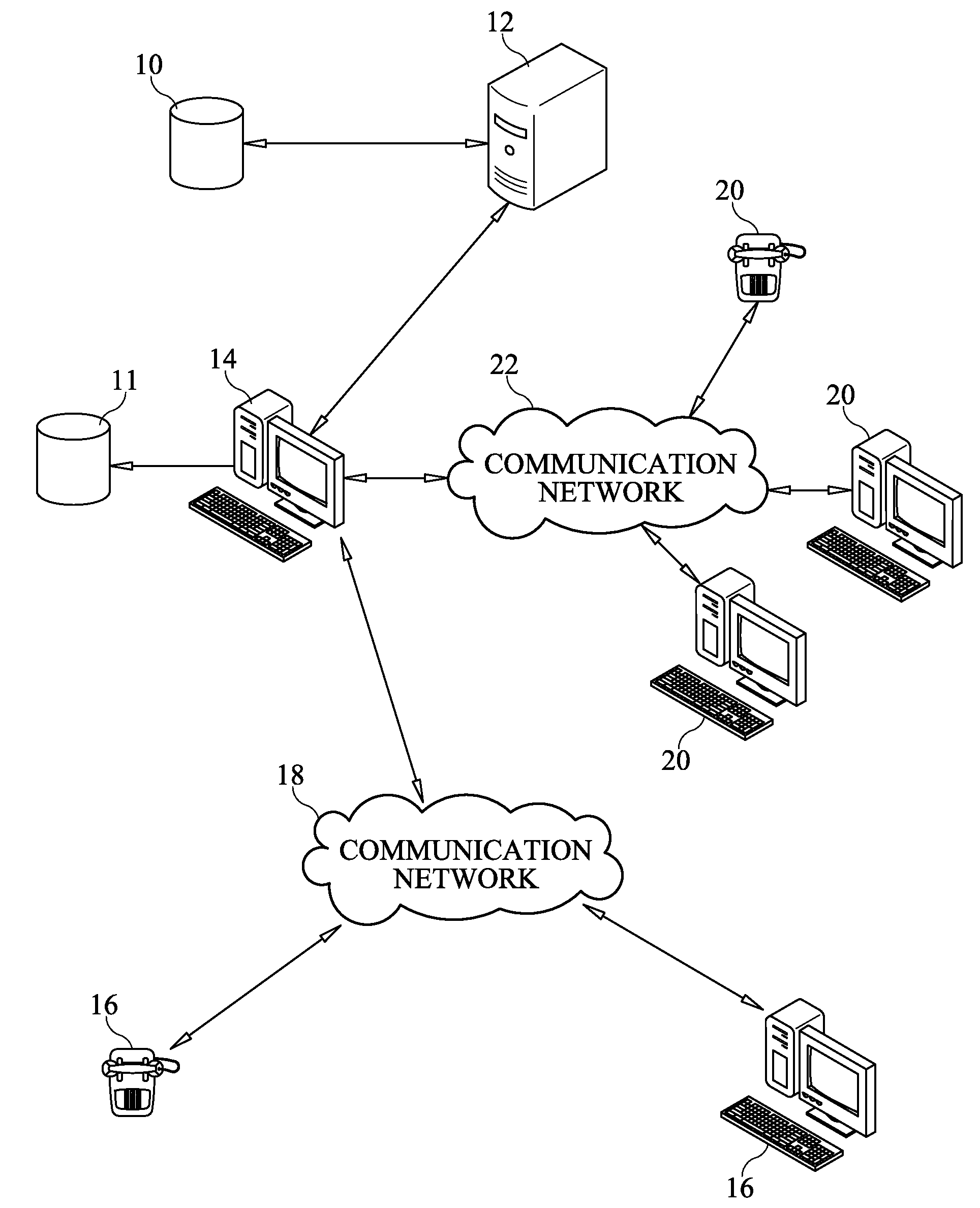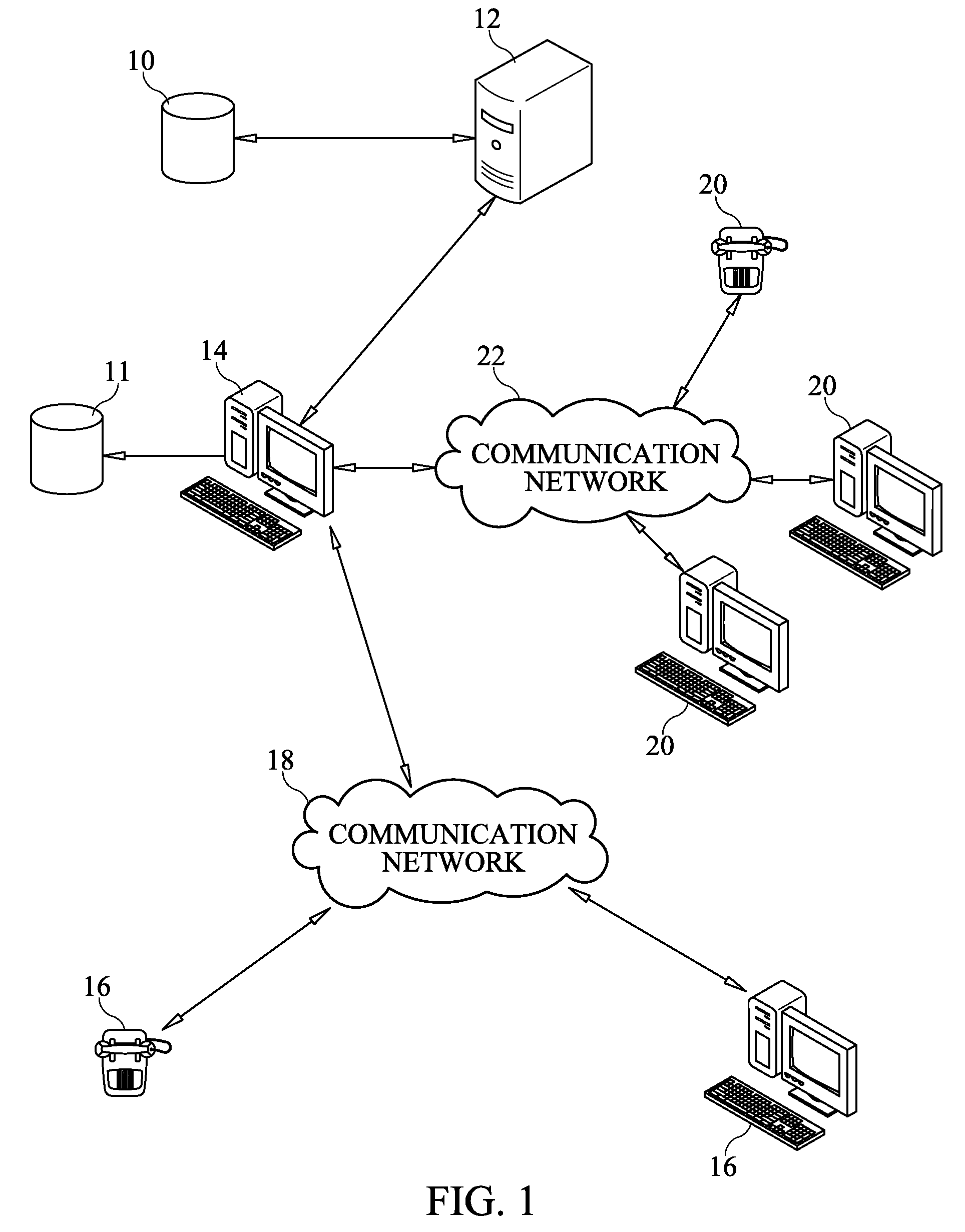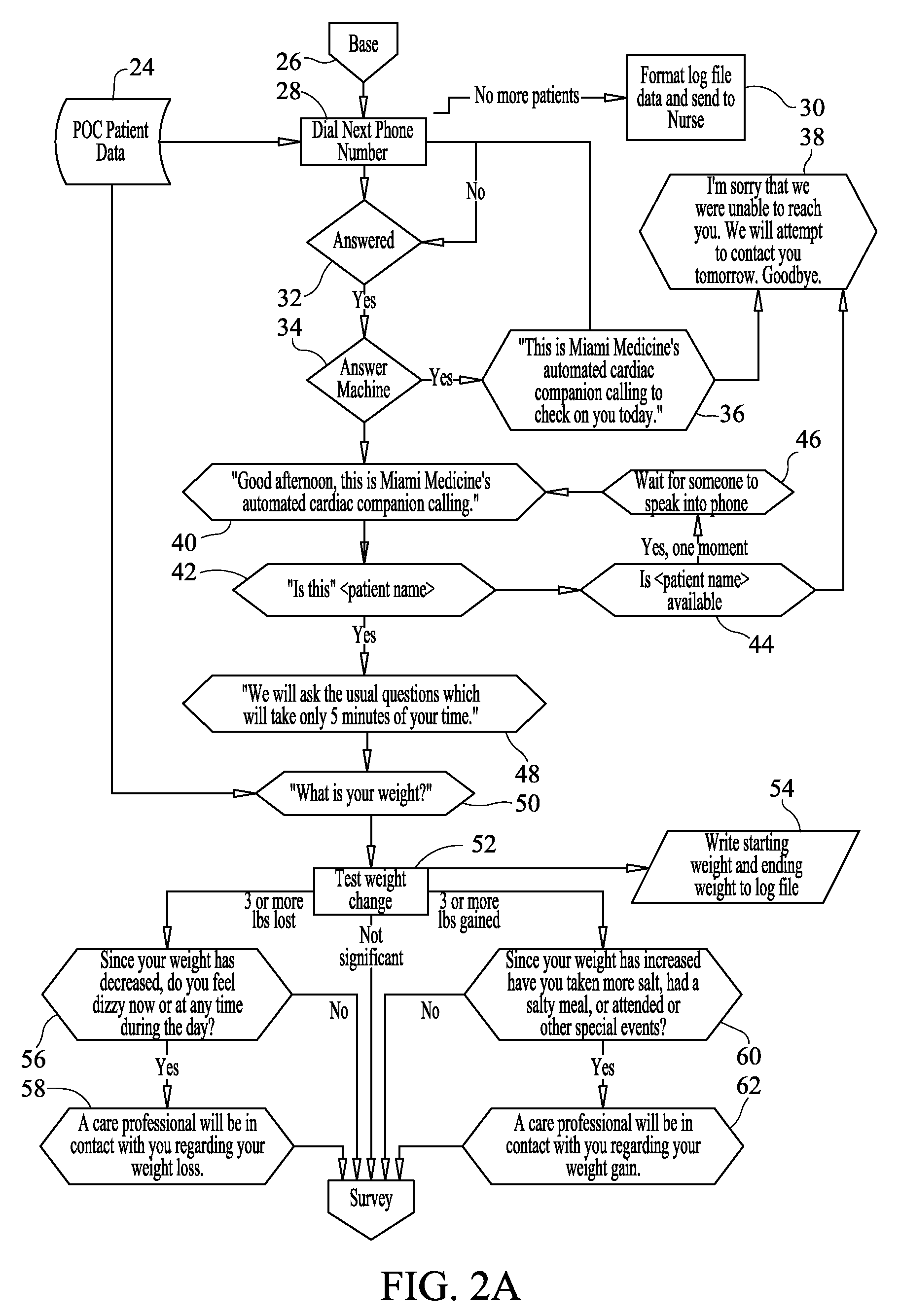System and method for using interactive voice-recognition to automate a patient-centered best practice approach to disease evaluation and management
a voice recognition and patient technology, applied in the field of chronic medical conditions monitoring, evaluation, and improving effectiveness and efficiency, can solve the problems of difficult to obtain sufficient nursing staff, difficult to conduct frequent, large-scale telephone interviews, and high cost of implementation of such a program, which is perhaps cheaper than an office visit, and improves patient awareness of key factors. , the effect of improving the gradation of responses and analysis
- Summary
- Abstract
- Description
- Claims
- Application Information
AI Technical Summary
Benefits of technology
Problems solved by technology
Method used
Image
Examples
Embodiment Construction
[0023]The present invention relates to a method of medical assessment and improved treatment and has particular utility in the management of chronic illness such as congestive heart failure (CHF)-HSC-3, asthma, diabetes, and chronic obstructive pulmonary disorder (COPD), allowing “best practice” standards or modified standards to be rigorously implemented. The invention also relates to medical risk management and improved documentation of patient trajectory of chronic illness over time and under various management approaches, as well as improved allocation of medical resources and staffing.
[0024]A schematic representation of a system for performing the method of medical assessment and improved treatment is illustrated in FIG. 1, wherein a database 10 has been created that includes data for one or more patients, such as patient identification, related contacts, stored queries and responses, corresponding status reports, care managers, and caregivers. As further described below, the d...
PUM
 Login to View More
Login to View More Abstract
Description
Claims
Application Information
 Login to View More
Login to View More - R&D
- Intellectual Property
- Life Sciences
- Materials
- Tech Scout
- Unparalleled Data Quality
- Higher Quality Content
- 60% Fewer Hallucinations
Browse by: Latest US Patents, China's latest patents, Technical Efficacy Thesaurus, Application Domain, Technology Topic, Popular Technical Reports.
© 2025 PatSnap. All rights reserved.Legal|Privacy policy|Modern Slavery Act Transparency Statement|Sitemap|About US| Contact US: help@patsnap.com



